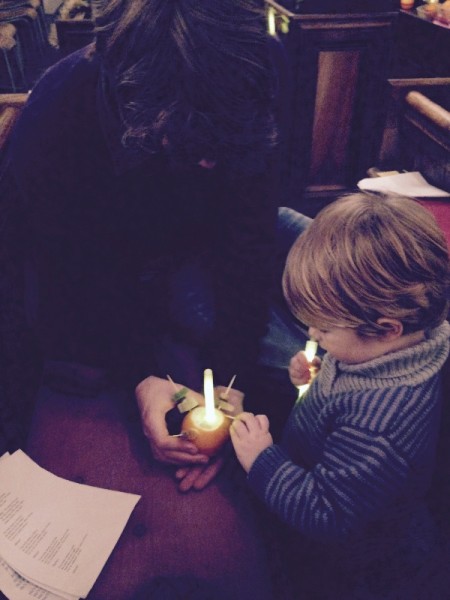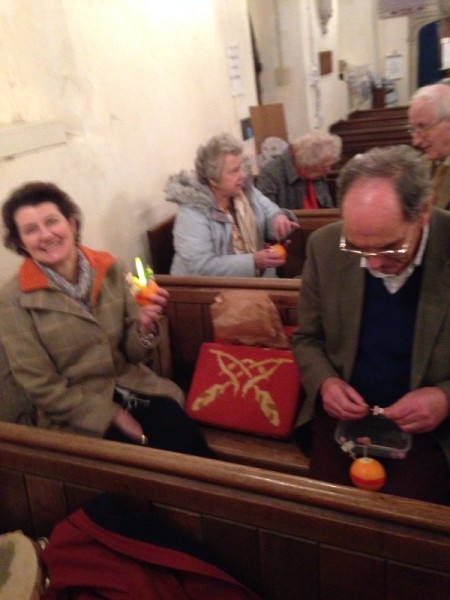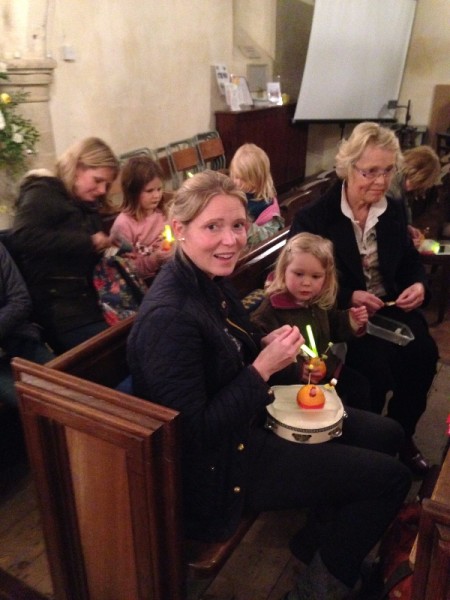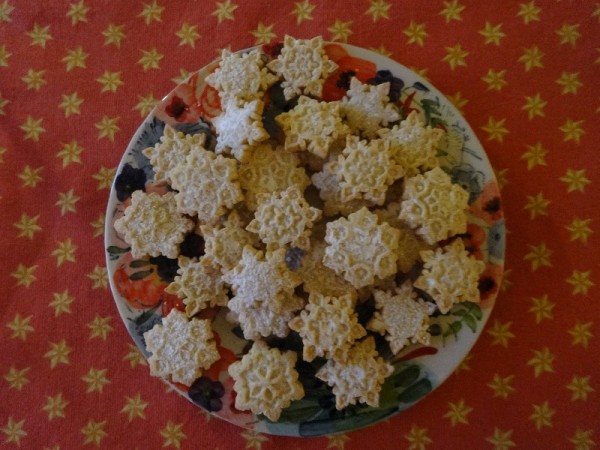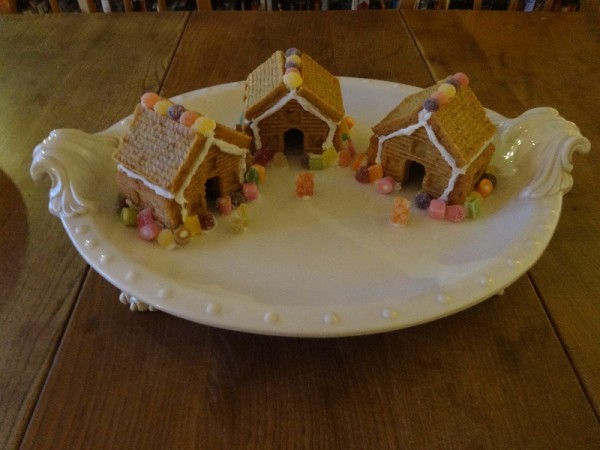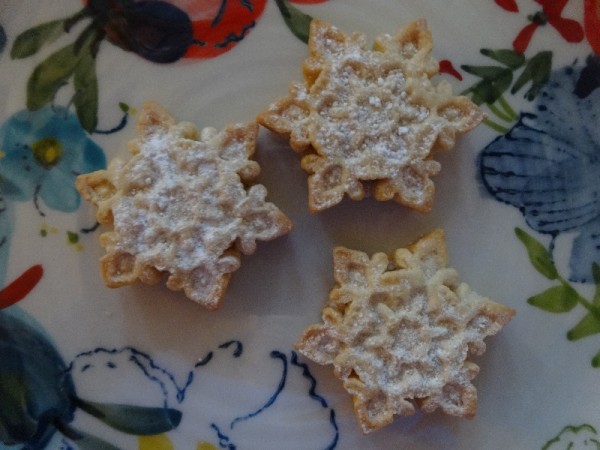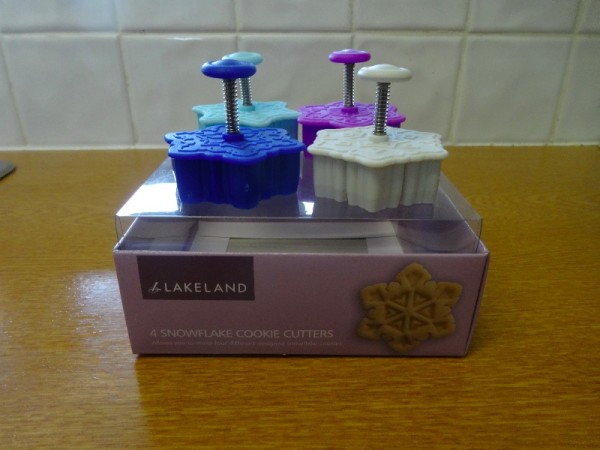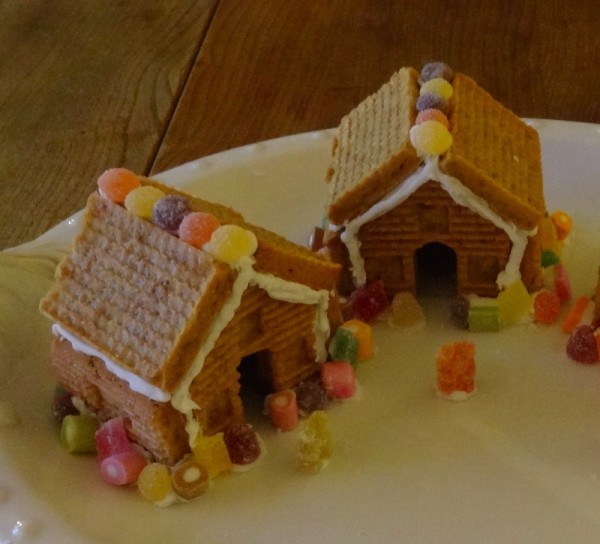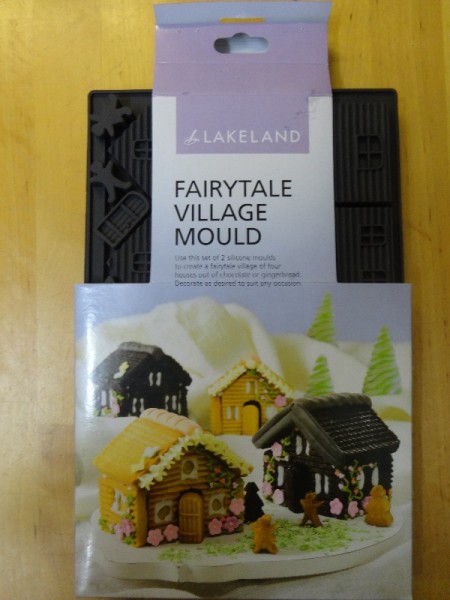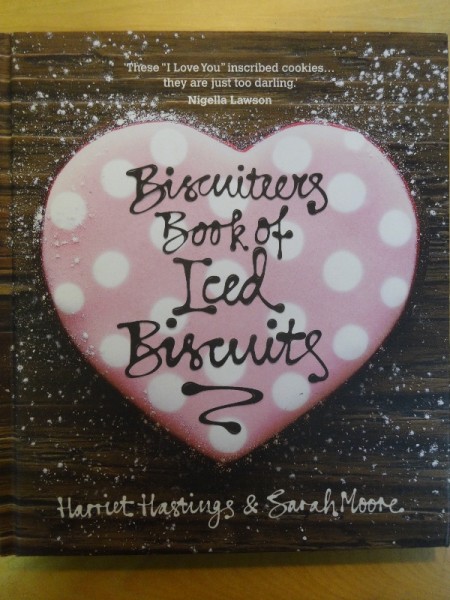Christingle, which I mentioned in my last post, is a comparatively recent addition to the Anglican calendar, having made its first appearance in 1968 to raise money for the Children’s Society. Its origins, however, go back to the C18 when John de Watteville, a Moravian minister (in Moravia, although the church has since become worldwide), devised the service to include not only popular hymns but also verses written by the children themselves. De Watteville understood the objectification of symbolism and towards the end of the service each child was given a lighted candle tied around with a red ribbon and the minister prayed, “Lord Jesus, kindle a flame in these children’s hearts, that theirs like Thine become”. His Marienborn Diary comments “hereupon the children went full of joy with their lighted candles to their rooms and so went glad and happy to bed”.
As you may imagine the Christingle service is especially appealing to the very young for whom lighted candles are greatly exciting. Originally the candle was tied with a simple red ribbon (the red standing for the sacrifice of Jesus). Later the candle was stuck in an orange (to symbolise the world) and the ribbon was tied around this, while dried fruit or sweets were threaded on 4 cocktail sticks to represent the fruits of the earth and the 4 seasons. Even more exciting.
This is the first time we’ve held a Christingle at Ipsden Church, although our sister church at North Stoke, having more children in the village, has had them for several years and for one family the assembling of the Christingle oranges has become a cherished Christmas tradition. In villages you have to work with the clay you are given and until recently Ipsden clay was of, shall we say, a geological vintage. Now we have some little ones – mostly under 5s (and including rabbit’s friends and relations and visiting grandchildren) so we devised a very informal service – a couple of hymns sung to organ and improvised tambourine accompaniment, short readings, an hoc choir of children who were press ganged – erm , who volunteered – as they came into church and organ playing by a young man not long with double figures to his age.
As little children love being involved in making things we set aside a large chunk of time for self assembly of the Christingle orange kits. Like the proverbially smooth swimming of water birds, this involved a good deal of back stage preparation as the individual parts were apportioned out beforehand by a small team of dedicated workers – sweet distributors, orange surgeons – to flatten the bottom and make a hole in the top for the candle – and red ribbon handmaidens. We shall draw a veil over the small contretemps between the vicar and his wife over exactly how many sweets were needed. (Lack of joined up thought on my part – what on earth did I think the church warden had bought 40 oranges for if they were not all to be christingled?) Gold stars to the son-in -law who gallantly ran the full half mile to the vicarage, found the jar of sultanas and then ran the return half mile rattling like a primitive musical instrument. (I never worked out whether everyone had the full quota of confectionary but as everyone seemed happy enough, I shall think no more about it.)
Prudently we had opted for glowsticks rather than candles, so adults had only the cocktail sticks to worry about. Unsurprisingly I had forgotten my camera so daughter No 1 took a few pics with her phone and – though one is a bit out of focus – I can’t resist showing them for obvious reasons. Biscuits and gingerbread houses were handed round. It was a very jolly time with plenty to laugh about. I shall long cherish the look of concentration on the faces of the farmer, the engineer and the retired army officer as they threaded their cocktail sticks with sweets…(see above)

